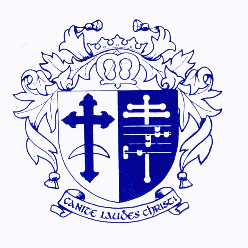St Mary's Cathedral Choir, Sydney facts for kids
The St Mary's Cathedral Choir in Sydney is Australia's oldest music group! It started way back in 1818. A group of singers first came together to sing for church services in the home of James Dempsey. At that time, Sydney was a penal colony, which means it was a place where prisoners were sent from Britain. Dempsey's home was the main place for Catholic worship.
When St Mary's Cathedral, Sydney, was built, these singers became the official Cathedral Choir. They were guided by Catherine Fitzpatrick. Today, the choir is over 200 years old! It has about 20 boy singers (called choristers) and 11 adult male singers (called lay clerks). They sing for Mass and Vespers (evening prayers) almost every day. The choir has traveled a lot for tours and concerts. Sometimes, they even sing with the Australian Brandenburg Orchestra. The choir's current leader is Mr. Thomas Wilson, who is the Director of Music.
The Choir's Amazing History
The choir's story began in 1818 with Catherine Fitzpatrick. She was a schoolteacher in New South Wales. Catherine started a group of singers to provide music for Catholic church services. Back in the 1800s, choirs often had both men and women singing together. In 1821, St. Mary's Cathedral was officially opened in Sydney. Catherine Fitzpatrick became the very first conductor of the Cathedral's choir.
For many years, the choir sang special kinds of music. This included Gregorian chant (old church songs) and polyphony (music with many different voice parts). They also sang classical Masses and other church music that was popular in the 1800s.
In 1955, a big change happened. The choir, which used to have men and women, was changed by Father Ron Harden. It became a choir of only boys and men. They even started a special school for the boy singers! This change followed an old tradition from England, where the cathedral's founders came from. It also matched the ideas of Pope Pius X. He wanted to bring back the traditional way Catholic church music was sung. So, the choir focused on Gregorian chant and polyphonic music. Famous composers like Palestrina and Victoria became very important to their music. Father John De Luca took over as director after Father Harden.
Later, David Russell led the choir from 1976 to 2009. Under his direction, the choir went on three international concert tours. They traveled to Europe twice and to the United States once.
Today, under Thomas Wilson, the choir sings even more types of music. They are a big part of the cathedral's daily prayers and worship. The choir sings at daily Vespers and Mass (except Fridays). They also sing at the main Sunday Mass at 10:30 am. The adult men of the choir sing Vespers most Sundays at 5:00 pm. New boy singers, who join the Cathedral College in Year 5, learn about music. They also learn about the Catholic faith, history, and culture.
The choir still performs music by old composers like Palestrina and Victoria. But they also sing music by modern composers such as Macmillan, Bingham, Matthew Martin, and David Briggs. Besides all this, they sing Gregorian Chant at every service. The adult men of the choir have even released a CD of Marian Vespers. The full choir is also working on a CD that will cover music for the whole church year!
In 2010, the Cathedral Choir was invited to sing in Rome, Italy. They sang at the opening of Domus Australia. Pope Emeritus Benedict XVI was there! While on tour in Rome, the choir performed in many famous churches. These included St Peter's Basilica and St Paul's Outside the Wall.
The year 2018 was very special. It marked 200 years since the choir began! In July 2018, the Cathedral Choir performed again at St. Peter's Basilica in Rome. Pope Francis was present for this amazing event. Earlier that year, the boy choristers also performed at the International Gregorian Festival in Watou.
Understanding the Choir's Crest
Just like a school or a sports team, the choir has its own special symbol called a coat of arms, or crest. This crest is worn on medals by the head-boys and other choristers with important roles. The crest is split into two equal parts. Each part has many symbols with special meanings. The colors on the crest are blue, crimson, white, and gold. Blue is for St Mary, crimson and white are the choir's colors, and gold is for special church holidays celebrating Christ.
The left side of the crest shows the symbols of the cathedral itself. There's a cross, which is a symbol of Christian faith. It sits on top of a crescent moon. The moon is a symbol for the Virgin Mary, who is the special patroness (protector) of the cathedral. Christian tradition often calls her the "Fair Moon." This means she came before Christ, who is like the "Sun of Justice."
The right side of the crest shows musical notes on a staff. These notes are from a famous Gregorian hymn to the Virgin Mary called "Alma Redemptoris Mater." This means "Hail, thou Mother of the Redeemer." This part of the crest reminds everyone of the choir's musical purpose. It also reminds them that the cathedral is dedicated to the Virgin Mary. Behind the music staff, there's a special cross called an archiepiscopal cross. This cross has two cross-bars and is only used by archbishops. It shows that the cathedral is the main church for the archbishop. It's the center of unity for the whole area (diocese) he leads.
Directors of Music
- 1818–1843 - Catherine Fitzpatrick
- c.1842–1854 - Isaac Nathan
- 1872–1907 - John Albert Delaney
- 1930–1933 - Dr Mario Petorelli
- 1933–1954 - William J. Caspers
- 1955–1970 - Fr Ron Harden
- 1970–1975 - Fr John De Luca
- 1975–2009 - David Russell
- 2009–2010 - Elizabeth Swain
- 2010–2023 - Thomas Wilson
- 2023–present - Daniel Justin
|


